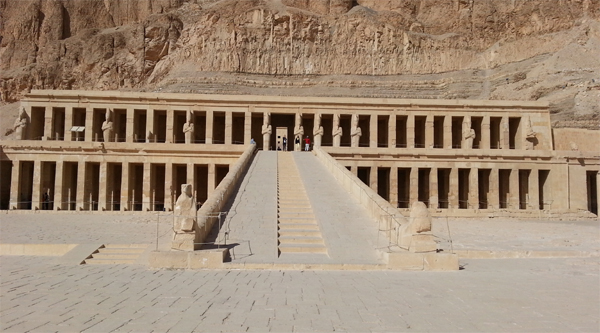Kings of the 18th dynasty in Egypt | List of 18th dynasty pharaohs
4.7 / 5 275 Reviews18th Dynasty
Get more information on Ancient history of Egypt and kings of the 18th dynasty including Queen Hatshepsut, Amenophis and Ramses the 2nd, when they ruled, what they achieved and what temples built.
Queen Hatshepsut (1488-1470 B.C.)
The best-known queen-pharaoh of Egypt. Her relatively peaceful reign, trade relations with punt and building activities at Thebes (Deir el Bahari temple and Karnak) are especially note worthy.
Tuthmosis the III (1490-1436 B.C.)
His military exploits on the north, northeast and south earned him the title of creator of the Egyptian empire. He also conducted an active building campaign, especially at Thebes (Karnak, Luxor).
Amenophis the I or Akhenaten (1365-1348 B.C.)
He was the first to establish a form of monotheism in Egypt. Akhenaten's great religious revolution involved the replacement of the state god Amon-Ra with the solar deity Aten. Artistic conventions and political traditions were also totally restructured.
The king moved the capital to a completely new city in Middle Egypt (Akheraten, now Tel el-Amarna). Many of the Egyptian holdings in Syria and Palestine which Tuthmosis the III had secured, were nearly lost under Akhnaten's reign.
Tutankhamon(1347-1348 B.C.)
The successor of Akhenaten, restored the cult of Amon-Ra and abandoned Tel el-Amarna in order to return to tradition. The discovery of his nearly intact tomb in 1922 revealed wealth and prosperity of the 18th Dynasty.
Amenophis the III (1403-1365 B.C.)
With his prosperous and peaceful reign and friendly diplomatic relations with many foreign countries in the western Asia, Egyptian art and culture reached a zenith.
Horemheb (1332-1305 B.C.)
Served as generalissimo and then king after the death of Tutankhamen and protected the country from foreign intruders.
19th Dynasty
In the 19th Dynasty ( 1305-1196 B.C.), Egyptian influence in Syria-Palestine was partially restored during the reigns of Seti I and Ramses the II. The capital was moved once again, this time to pi-Ramesse in the eastern Delta. The origin of the Ramesside family and a more strategic location was a Syria-Palestinian affairs. The Hittites in Asia minor were Egypt's chief rival at this period; both sides struggled to control the Syro-Palstinian region (Battle of Kadesh).
Ramses the III
In the reign of Ramses the III, 1196 B.C. Aegean tribes known as the Sea people threatened to infiltrate the Egyptian Delta region. Economic and cultural decline, coupled with the threat of foreign invasion, contributed to the weakening of central authority; strikes and cases of corruption are documented in the ancient sources . At Thabes, the priesthood of Amon achieved ever greater political influence.
